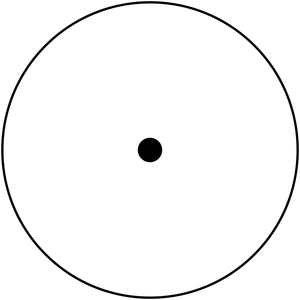
I know, I know, the world does not need yet another explanation on monads. There have been a lot of related articles you can find on the Internet. Still, most of them are so math-intensive that we as software developers (we aren’t good at math) don’t want to read. So please give me a try to explain monads to you. I think they are worth knowing about. No math knowledge is required. What I want from you is just a basic knowledge of functional programming.
MotivationLet’s say we have a collection of functions with type A -> A:
f1 : A -> A f2 : A -> A f3 : A -> A f4 : A -> ASince these functions are symmetric, they are automatically composable, e.g., to compose f1 with f2 we just write f1 >> f2.
One day we modify some of them to type A -> M:
f1 : A -> M f2 : A -> M f3 : A -> M f4 : A -> AOh man, now f1, f2, and f3 are not automatically composable anymore.
The magicCompose operatorAssume that we could compose f1 and f2 by using a magicCompose operator: f1 magicCompose f2, we denote the magicCompose as >>=, so we can write f1 >>= f2.
Let’s build the magicCompose operator and we will see that it is not magic at all.
The operator receives two functions f1 and f2 of type A -> M as input, its job is to return a function of the same type (a : A) -> M which makes use of f1 and f2.
Firstly, a is always passed to f1, and something m of type M is returned.
Secondly, m is “unwrapped” to reveal something of type A and that something will be passed to f2. The result produced by f2 is the final result (of type M, of course). Sure, the unwrapping can be failed (at run-time). In this case, it’s up to magicCompose to determine something of type M as the final result, and f2 could be ignored (not called).
The second step described above is actually over-specific, although it is the most common situation. In general, at this step the magicCompose operator can do whatever logic, use m and f2 in an arbitrary way, as long as finally it produces something of type M.
The signature of the magicCompose operator:
magicCompose : (A -> M) -> (A -> M) -> (A -> M) // f1 f2 resultUse it:
f1 magicCompose f2 // or f1 >>= f2 The bind functionOften, when writing code, we don’t want to explicitly magicCompose f1 and f2. We just call f1 first, receive something of type M, and then pass it to an “upgraded version” of f2. We call this version as f2’, its type is of course M -> M.
A function that upgrades f2 to f2’ is called bind function. Its implementation is actually the second step of the magicCompose operator as described above.
Let’s describe it again!
The bind function receives a function f2 of type A -> M, its job is to create a new function of type (m : M) -> M which performs whatever logic on m and f2, as long as finally something of type M is returned.
The signature of the bind function:
bind : (A -> M) -> (M —> M) // f2 f2'Use it:
f1 a |> bind f2 The bind operatorStill, there is a shorter syntax:
f1 a >=> f2The operator >=> is called bind operator. Its implementation is actually the body of the function returned by the bind function as described above.
Let’s describe it again!
The bind operator receives something m of type M and a function f2 of type A -> M, its job is to perform whatever logic on m and f2 in order to return something of type M.
To summarize, at the core of this mechanism is the bind operator which glues something of type M to some function of type A -> M. The bind function is built on-top of the bind operator. And the magicCompose operator is built on-top of the bind function.
Phew … you can take a rest before continuing.
The unit functionHow about the function f4? Its type is still A -> A, it is out of the league of functions with type A -> M. Hence f4 cannot be composed with any function of that league in the uniform way — by using the bind function.
So we need a way to convert f4 from type A -> A to type A -> M.
That way is called a unit function which transforms the output of f4 (type A) to something of type M. If we call the new version of f4 as f4' we have:
f4' = f4 >> unitNow, to compose f3 with f4 we just write:
f3 a |> bind (f4 >> unit) // or f3 >>= (f4 >> unit)By convention, the former one is often written as:
f3 a |> map f4where map is a function that does a “big upgrade”: it upgrades a function of type A -> A to a function of type M -> M. (*)
Here is the implementation of the map function — very simple:
let map f = bind (f >> unit)The unit function should be trivial / simple / stupid / straightforward / obvious. For example, if A is int and M is a list of int, then unit x = a list with only one element x (this is the unit function of the List Monad).
The two types A and M, together with the magicCompose operator (or the bind function/operator) and the unit function, define a monad!
There is an interesting analogy: if the set of the A -> M function are numbers, then the magicCompose operator is an numeric operator like +-*/, and the unit function is the neural number (like 0 for + or 1 for *).
This analogy leads to three laws of a monad.
The three monad lawsStrictly speaking, a monad is “officially” called monad if it obeys the three laws below:
just like 0 + f = f or 1 * f = f
just like f + 0 = f or f * 1 = 1
just like f + (g + h) = (f + g) + h or f * (g * h) = (f * g) * h
It is not that just because of the analogy we have these three laws. They also have their practical reasons.
The practical reason for the 3rd law is obvious: without that law, it would be very surprised for programmers when seeing f >>= (g >>= h) produces something different from (f >>= g) >>= h.
Regarding the 2nd law, consider:
f >> map idwhere id is an identity function: it always produces output which is the same as its input.
Look into map id and re-read the definition of the map function at (*). Logically, this expression should produce a function that is also an identity one. In other words: map id = id. So we have:
f >> map id = f // or f >> bind (id >> unit) = f // this means f >> bind unit = f // or f >>= unit = fThis is exactly the 2nd law: right identity.
Finally, the 1st law is just a consequence of the 3rd and 2nd laws:
(f >>= unit) >>= g = f >>= (unit >>= g) f >>= g = f >>= (unit >>= g) g = unit >>= gYes, this is exactly the 1st law: left identity.
Do Notation or Computation ExpressionsThe three monad laws are quiet important for a wonderful language feature: the so-called Do Notation in Haskell, or Computation Expressions in F#. These provide very nice sugar-syntax when composing functions with monads.
But that would be another article in the future, in which we will also discuss some common monads like Maybe / List / State / Reader / Writer monads.
Advertisements Share this:- More



![Revelation (de La Vega Cats) by [Dane, Lauren]](/ai/054/020/54020.jpg)

